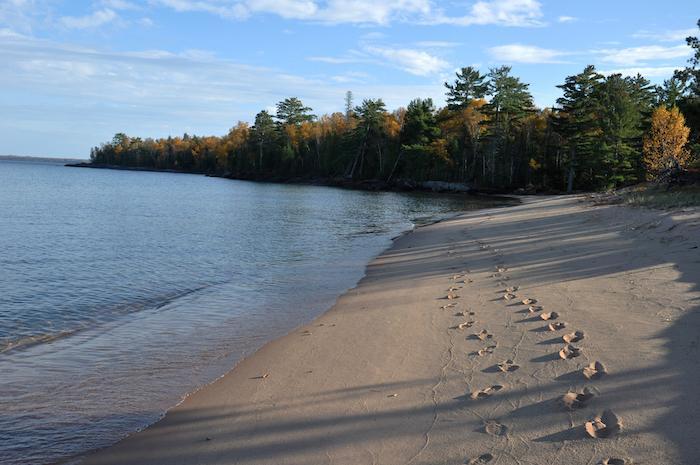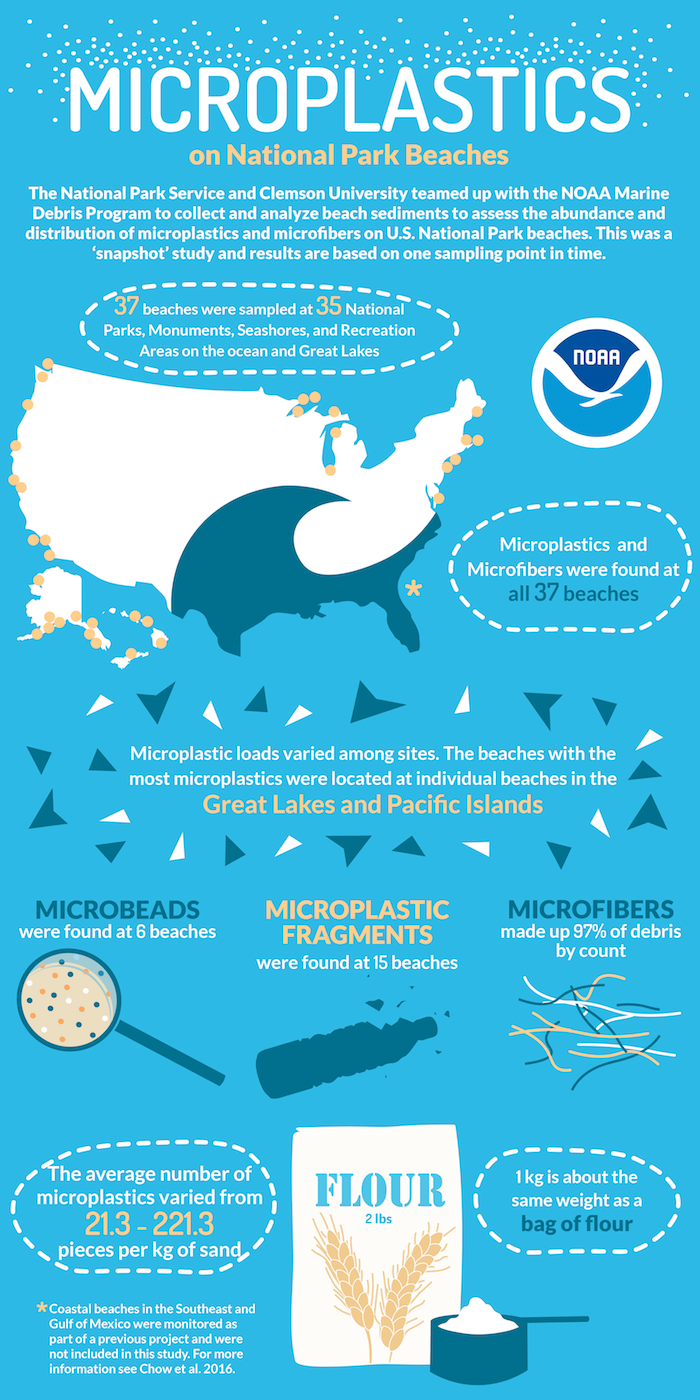
Apostle Islands National Lakeshore had more pieces of microplastics buried in its beaches than any other unit of the National Park System that was surveyed for microplastics pollution/NPS
Tiny specs of plastic, less than two-tenths of an inch in length, are awash in waters lapping national parks and accumulating in their sandy beaches, creating problems for wildlife and park visitors.
It's long been known that plastic debris can entangle wildlife or be ingested and lead to death. While that debris is easily seen, the arrival of microplastics is creating additional problems that are hard to mitigate, according to a recent report that suveyed 37 units of the National Park System for microplastics.
Beyond being deadly for wildlife that become entangled or ingest plastics, studies have show that microplastics retain heat. That can be an issue for sea turtles, which deposit their eggs in nests dug out of beaches, because the sand's temperature influences the sex of the developing hatchlings.
Too, the study noted that plastic tends to absorb "environmental contaminants, such as PCBs," as well as heavy metals.
According to Quantification of Microplastics on National Park Beaches, a study developed from research gathered from June 2015 and through May 2017, Apostle Islands National Lakeshore in Wisconsin far and away had the greatest concentration of microplastics among the 37 parks surveyed.
Apostle Islands had a mean count of 221.3 pieces of microplastics per kilogram of sand, while the National Park of American Samoa stood second, with a mean count of 187.5 pieces, the researchers found. On the low end of the scale were Sitka National Historical Park, Cabrillo National Monument, Lake Clark National Park and Preserve, Klondike Gold Rush National Historical Park, and Glacier Bay National Park and Preserve, all of which had counts ranging from 50-125 pieces per kilogram of sand.
At Apostle Islands, staff plan to do more intensive sampling this year and gather more data on lake and river currents to better understand the deposition process.
"Unlike other studies, there was no relationship between developed areas and number of microplastic particles seen," the study's researchers said. "Indeed, many sites in the study are very remote and far from urban centers but still have over 100 pieces per kg of sand, especially in Alaska, along the northwest Pacific coastline, and the islands in the Pacific."

Microplastics were traced to land-based sources, "such as rivers and wastewater treatment plants, or from the degradation of larger plastic pieces in open ocean landing on the shore," they wrote.
Hawaiian parks, the report noted, get high amounts of plastic from Asia.
"Hawaii is located at the convergence zone in the middle of the North Pacific Ocean and close to the Pacific gyres where both wind and currents in the area will push floating microplastics to shore. Indeed, some of the highest microplastic loads were found in the Hawaiian Islands," it said. "Both Kalaupapa National Historical Park, located on the island of Molokai,and Haleakala National Park, located on the island of Maui, receive direct winds from the east, which could bring floating microplastics from these gyres onshore.
"In addition, there was a drain pipe that empties onto the beach within sight of the sampling location at Haleakala National Park. This could carry more land-based material to the beach. The subtropical countercurrent that runs from the western Pacific toward Hawaii could carry debris directly from the Asian coast," the narrative continued. "Hawai’i Volcanoes National Park had the lowest microplastic load of the three Hawaiian sites (but still in the top half of all sites in this study). Its location on the leeward (south) side of the island of Hawaii reduces onshore winds and places it near a current that pushes water away from shore, potentially reducing the microplastic load at that site."
Apostle Islands and the other national lakeshores on the Great Lakes were confronted by "some of the highest microplastic loads in the entire study.
"Most microplastics entered the Great Lakes via its tributaries. This would explain the high counts at Apostle Islands National Lakeshore, which is located near the mouth of the St. Louis River," the researchers said. The St. Louis River "runs through Duluth, Minnesota, and is the largest tributary of the lake with a 3,584-square-mile watershed. Strong currents that move from Duluth eastward toward the Apostle Islands, along with complicated wave action around the islands, would increase the probability of elevated microplastic loads."



Add comment